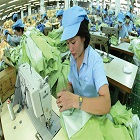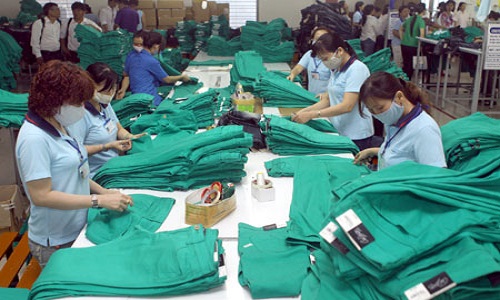"With the normalisation of relations between Vietnam and the US in 1995, what followed was the signing of the Vietnam-US Bilateral Trade Agreement (BTA) on in 2000. The treaty opened up a new chapter in investment and trade between the two nations. Then onwards, the textile and apparel industry made remarkable strides, impressing US importers with its reasonably-priced, high-quality products."

With the normalisation of relations between Vietnam and the US in 1995, what followed was the signing of the Vietnam-US Bilateral Trade Agreement (BTA) on in 2000. The treaty opened up a new chapter in investment and trade between the two nations. Then onwards, the textile and apparel industry made remarkable strides, impressing US importers with its reasonably-priced, high-quality products.
And as Le Quoc An, Former Chairman of Vietnam National Textile and Garment Group (Vinatex) opines the local textile and garment sector moved from being merely a processing market for the relatively tolerant Soviet Union and Eastern European markets, to conquering the US market – a market renowned for its strict regulations.
Export milestones

The prominent companies that had the wherewithal to enter the US market at the time were: Garco 10 (May 10), Viet Tien Garment, and Nha Be Corporation. The turning point for Vietnam’s textiles and garments reaching the US market in a meaningful, professional manner did not come until the end of 2001 when some 20 local companies came to a trade fair and the launch of a Vinatex office in New York. Thanks to this event, Vinatex finally got the opportunity to meet leaders in the field including the American Apparel and Footwear Association (AAFA), the US International Trade Admission (US ITA), and from the JC Penney Company. One year later, these leaders began to co-operate with Vietnamese textile companies and textile exports to the US began to pick up.
In 2001, prior to the BTA taking effect, Vietnam’s textile and garment exports to the US was $47 million. In 2002, it skyrocketed to $957 million, a 20-fold increase. In 2004 Vietnam’s textile and garment exports to the US reached $2.4 billion; and by the end of 2015, the figure hit a whopping $11.5 billion. Vietnam’s textile and garment market has become the US’ second-biggest import market, following China.
Vietnamese account for 9 per cent of the US import market share. The value of textile and apparel exports to the US is expected to reach $13 billion in 2016, and touch $20 billion by 2020, says An. However, AmCham predicts the magic $20 billion number will not be reached until 2025.
Growth of local businesses
The BTA has created a foundation for local apparel makers to grow quickly through knowledge gained from doing business with global partners. What was once a small sector that needed a visa for every single export order is now the number one export industry in Vietnam, says An. Many local companies were encouraged to invest in machinery, equipment, and technology, as well as enhance their human resource base to manage and utilise new production systems and technology, as Vietnamese textile and garment products gradually charmed the US market. Crucially, this changed the perspective and mindset of local businesses, moving them from a collection of small, scattered businesses, to a network of well-managed enterprises with a common goal and the management skill necessary to efficiently handle large orders from the US market.
Noted Tran Van Pho, Chairman of Hoa Tho, after some 20 years of exporting textile and garment products to the US, the company has become a trustworthy partner of many world-famous brands including Snickers, Burton, Novadry, Haggar, Perry Ellis Portfolio, and Calvin Klein.
Of course, it is not by luck that the Vietnamese textile and garment sector has gained a strong foothold on the global textile map, or in the US market, for that matter. According to Pho, in the first few years of targeting the US market, Vietnamese apparel firms were overwhelmed by trade barriers and complicated regulations on quality, specification, technology, and the environment. As such, the industry’s determination and hard work to adapt to higher market standards was the secret to its success.
According to An, the rapid boost in exports to the US has helped improve the added value of the textile and garment chain in Vietnam, in terms of massive investment injected into upgrading the entire industry. The scale of production has multiplied as a result, and companies are now familiar with international business standards and export markets.
Meanwhile, local textile businesses have also taken the initiative to cut out intermediary phases, and have increased their direct exports to international markets. Previously, Vietnam textile and garment companies needed to pass at least three intermediary steps to reach the US market. According to Vinatex director general Le Tien Truong, the TPP, will slash 60 per cent tariffs to zero, and promote textile and garment exports at an estimated growth rate of over 20 per cent.
A number of large investment projects have been carried out by Vinatex since the end of 2013, with 60 per cent of total investments used in material projects. Vinatex expects to spend some $459 million during the 2015-16 to invest in what are considered to be weak production lines.












